
Dame Jocelyn Barbara Hepworth was an English artist and sculptor. Her work exemplifies Modernism and in particular modern sculpture. Along with artists such as Ben Nicholson and Naum Gabo, Hepworth was a leading figure in the colony of artists who resided in St Ives during the Second World War.

Patrick Joseph Caulfield,, was an English painter and printmaker known for his bold canvases, which often incorporated elements of photorealism within a pared-down scene. Examples of his work are Pottery and Still Life Ingredients.
Graham Vivian Sutherland was a prolific English artist. Notable for his paintings of abstract landscapes and for his portraits of public figures, Sutherland also worked in other media, including printmaking, tapestry and glass design.
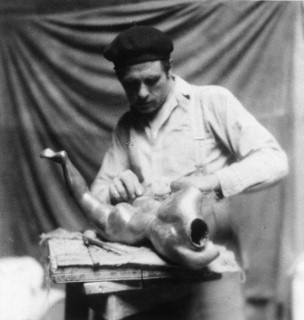
George Claude Leon Underwood was a British artist, although primarily known as a sculptor, printmaker and painter, he was also an influential teacher and promotor of African art. His travels in Mexico and West Africa had a substantial influence on his art, particularly on the representation of the human figure in his sculptures and paintings. Underwood is best known for his sculptures cast in bronze, carvings in marble, stone and wood and his drawings. His lifetime's work includes a wide range of media and activities, with an expressive and technical mastery. Underwood did not hold modernism and abstraction in art in high regard and this led to critics often ignoring his work until the 1960s when he came to be viewed as an important figure in the development of modern sculpture in Britain.
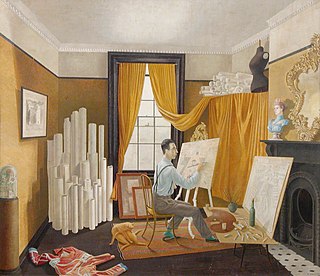
Edward Bawden, was an English painter, illustrator and graphic artist, known for his prints, book covers, posters, and garden metalwork furniture. Bawden taught at the Royal College of Art, where he had been a student, worked as a commercial artist and served as a war artist in World War II. He was a fine watercolour painter but worked in many different media. He illustrated several books and painted murals in both the 1930s and 1960s. He was admired by Edward Gorey, David Gentleman and other graphic artists, and his work and career is often associated with that of his contemporary Eric Ravilious.
Bernard Cohen is a British painter. He is regarded as one of the leading British abstract artists of his time.

John Bellany was a Scottish painter.
Flora Marguerite Lion was an English portrait painter. Lion had a long and successful career and was known for her portraits of society figures, landscapes and murals.
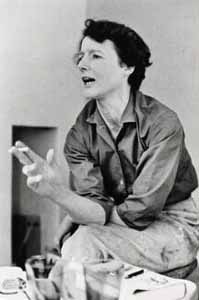
Prunella Clough was a prominent British artist. She is known mostly for her paintings, though she also made prints and created assemblages of collected objects. She was awarded the Jerwood Prize for painting, and received a retrospective exhibition at Tate Britain.
Lisa Milroy is an Anglo-Canadian artist known for her still life paintings of everyday objects. In the 1980s Milroy’s paintings featured ordinary objects depicted against an off-white background. Subsequently her imagery expanded, which led to a number of different series including landscapes, buildings and portraits. As her approaches to still life diversified, so did her manner of painting, giving rise to a range of stylistic innovations. Throughout her practice, Milroy has been fascinated by the relation between stillness and movement, and the nature of making and looking at painting.
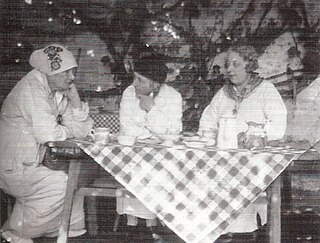
Clare "Tony" Atwood was a British painter of portraits, still life, landscapes, interiors and decorative flower subjects. Atwood lived in a ménage à trois with the dramatist Christabel Marshall and the actress, theatre director, producer and costume designer Edith Craig from 1916 until Craig's death in 1947.
David Haughton (1924–1991) was a British artist associated with the St Ives movement. Many of his paintings, etchings and drawings feature aspects of the Cornish landscape, particularly the area around St Just.

Anthony Imre Alexander Gross was a British printmaker, painter, war artist and film director of Hungarian-Jewish, Italian, and Anglo-Irish descent.
Claude Maurice Rogers was a British painter of portraits and landscapes, an influential art teacher, a founding member of the Euston Road School and at one time the President of the London Group of British artists.

Ray Atkins is a British figurative artist, member of the St Ives School & the London Group and educator. He was born in 1937 in Exeter, Devon, and studied art at Bromley College of Art and at the Slade School of Fine Art. He is known particularly for his large paintings, painted in situ over a period of weeks or months.
Martin Froy was a painter of figures, interiors and landscapes; part of a school of British abstract artists which flourished between the 1950s and 70s.
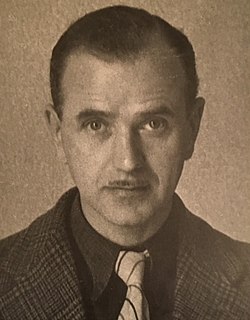
Harold Williamson (1898–1972) was a British artist, known as a painter, designer, etcher and teacher.
Jean Mary Spencer was a British artist known for her abstract paintings and relief sculptures.
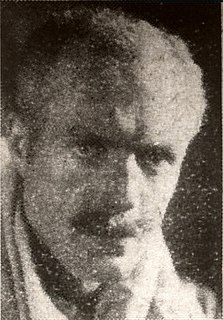
Alfred Ernest Egerton Cooper, RBA, ARCA, was a British painter of portraits, landscapes and other figurative work. In the era of Modernism, he continued to work in traditional style from his studio in Chelsea, London.
(Barbara) Hazel Guggenheim King-Farlow McKinley (1903–1995) was an American painter, art collector, and art benefactor.











